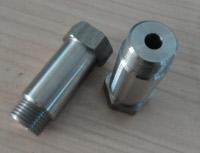Well at least CH (don't know where you get this letter combination CS would be right?) 4G63 reports these kinds of fault codes and it runs newer ECU than 4G69.
When narrowband lambda is reading AFR's like 11, 12 and 13, which are all perfectly normal values on flat out runs on high RPM's the narrowband shows basically nothing. On AFR ~13 it shows some of the upper curves of sinewave which is direct indicator for too rich mixture. For example voltage going from .1 to .2. So when there is some fault that makes the engine run that rich, when it should run stoichiometric, there is sometimes no way for ECU to tell, if the Lambda is broken or not. That's why in some cases it reports lambda broken.
If there is slight under-efficiency I think it is possible for ECU to have it's own code.
^That is one, very considerable alternative for simulator. I would recommend trying that out too. I just had one simulator on my hands and you don't have to solder it if you don't like. You can always get connector's and a few pins and make a easily removable component in between Lambda and ECU.
When narrowband lambda is reading AFR's like 11, 12 and 13, which are all perfectly normal values on flat out runs on high RPM's the narrowband shows basically nothing. On AFR ~13 it shows some of the upper curves of sinewave which is direct indicator for too rich mixture. For example voltage going from .1 to .2. So when there is some fault that makes the engine run that rich, when it should run stoichiometric, there is sometimes no way for ECU to tell, if the Lambda is broken or not. That's why in some cases it reports lambda broken.
If there is slight under-efficiency I think it is possible for ECU to have it's own code.
^That is one, very considerable alternative for simulator. I would recommend trying that out too. I just had one simulator on my hands and you don't have to solder it if you don't like. You can always get connector's and a few pins and make a easily removable component in between Lambda and ECU.

